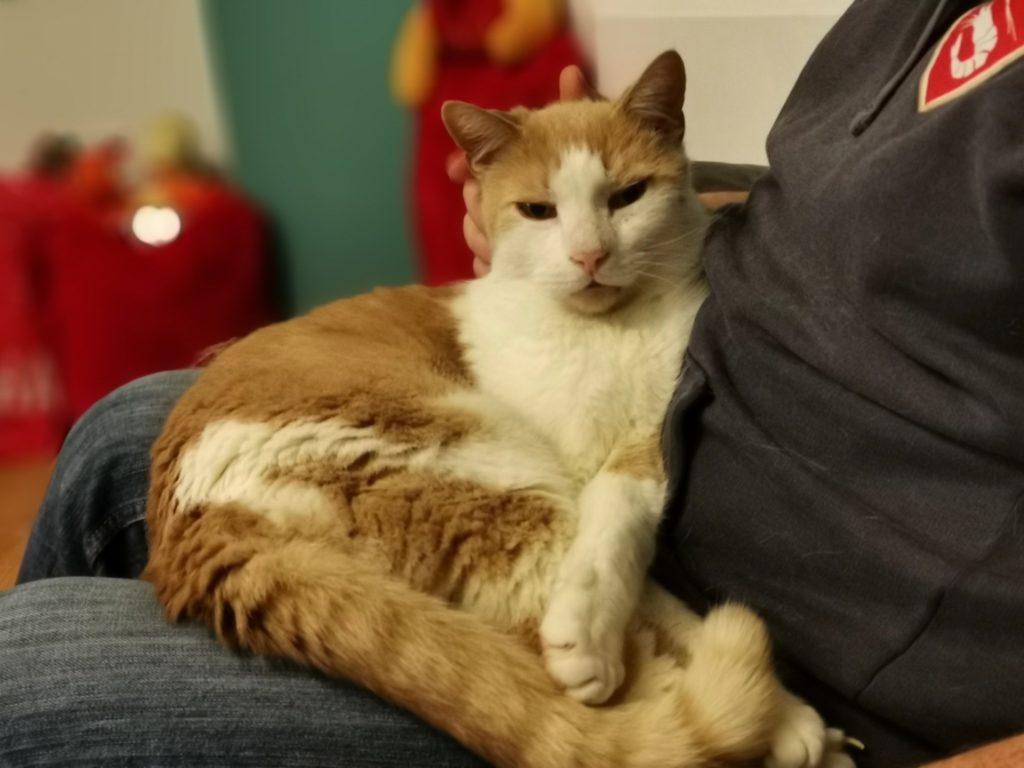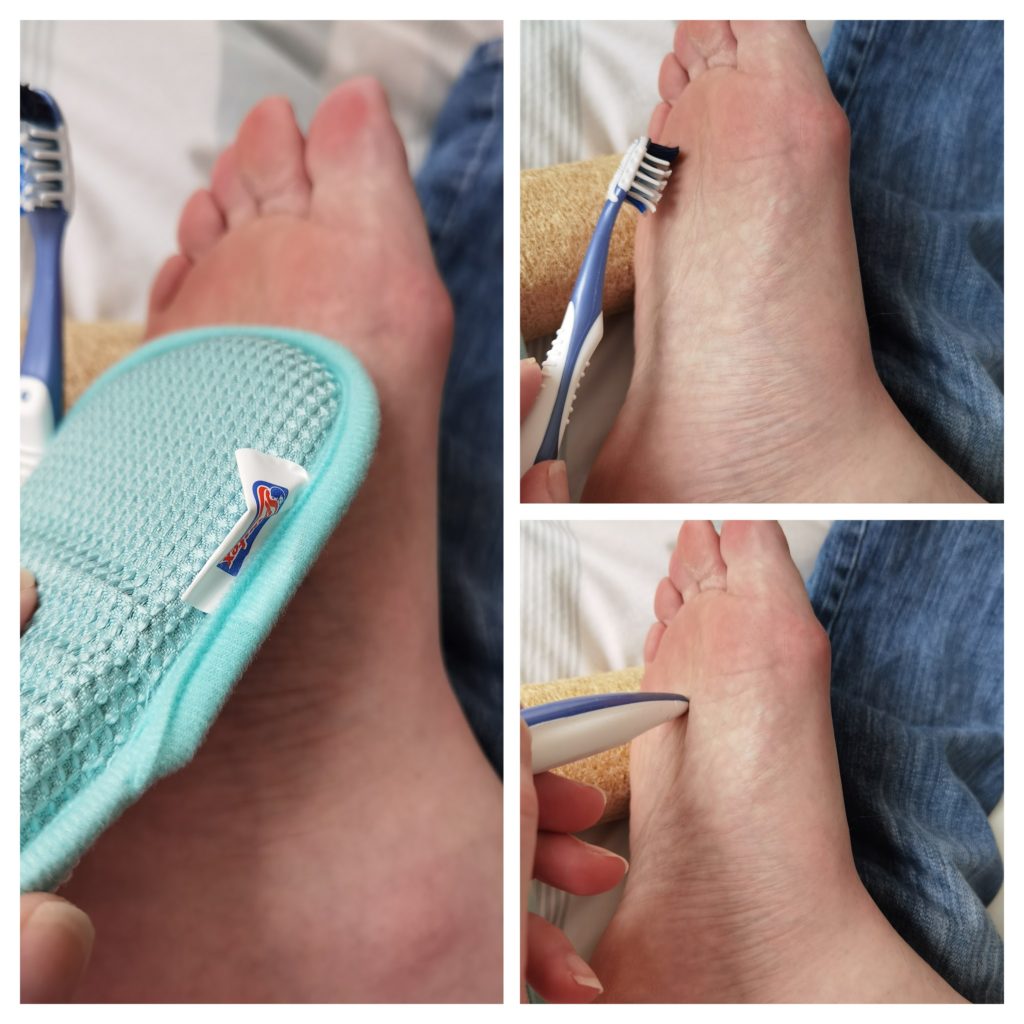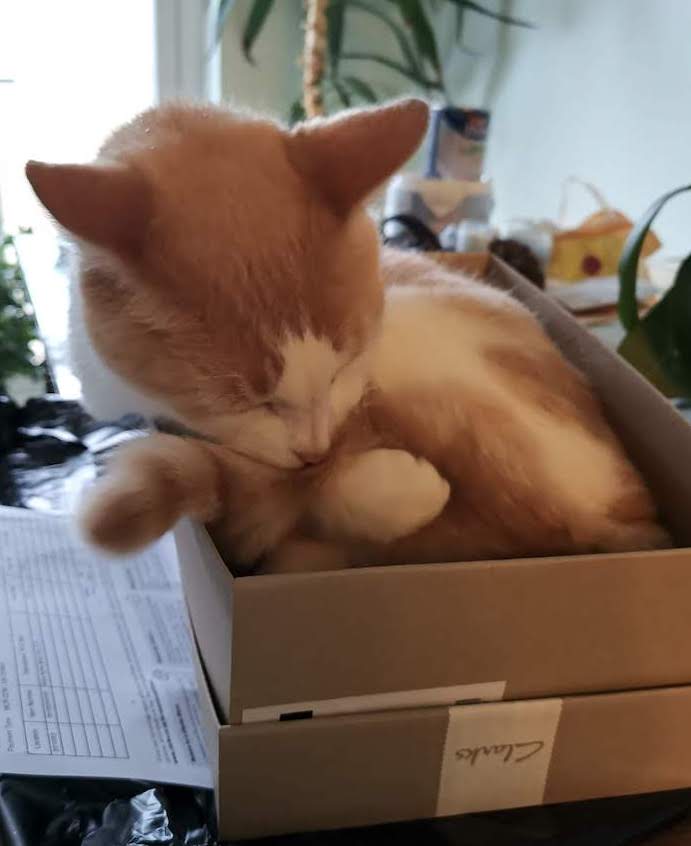Pain isn’t real.
Honestly, it isn’t.
It is all in your mind.
It isn’t like, say, a cat.
A cat is real.
You can see a cat. You can touch a cat.
You can stroke a cat that is curled up on your lap, as you half-heartedly watch a re-run of ‘Friends‘ on TV.

When that ‘Bastard Cat’, for no reason whatsoever, decides to bite in to the fleshy part of your hand, just below your thumb, an electrical relay is sent flying along a network of nerves. These signals hit the spine and shoot up to the brain, to tell it what just happened. The brain interprets the electrical transmission and turns it in to;
WHAT THE F***!!!???!!!???
The brain produces ‘pain‘. It then sends signals out for the body to do lots of things, including throwing the ‘Bastard Cat‘ off your lap.
In a thousandth of a second, from daydreaming about which ‘Friends‘ character was the hottest (Jennifer Anniston, obviously! Brad Pitt, what on earth were you thinking?) to yelling out a curse or three.
Then the brain, while still creating more pain, (‘cause you haven’t got enough of it yet), directs you to ‘do stuff‘ in response, like, jump up, as quickly but carefully as possible, walk to the toilet using only one walking stick, so as to avoid bleeding on the other one while also reducing the risk of infection. A minute or two holding hand under running water and washing it thoroughly, before returning to the settee as adrenaline and pain start to subside. Attention now entirely focused on the vacated ‘Bastard Cat‘, wondering what on earth had caused him to do that?
Jennifer Anniston long since displaced as the centre of my attention…
The pain wasn’t real, my brain had created it. Specifically, the ‘pain matrix‘ which includes, among other areas, the dorsal anterior cingulate cortex. It is incredible to think that we put men on the moon more than fifty years ago, yet we still don’t fully understand how pain is generated.
When I say “we” I mean ‘human kind‘ and specifically, neuroscientists who know where the ‘dorsal anterior cingulate cortex‘ is, without the use of Google.
And yet, I could, if I so desire, easily walk barefoot over broken glass. Well, as easily as I can walk anywhere barefoot, with two walking sticks on an uneven surface.
The electrons would begin the relay race to the brain from my feet. They’d fly up my legs, racing to tell the brain ‘he’s doing something stupid! Make him realise it! Make it HURT!‘ They’d pass the baton of information along pathways until it gets to the cauda equina, the ‘horse’s tail‘ shape of nerves that splay out of the base of the spine (hence the name). Here, it all gets jumbled up. The electrical signals fail to find a route through, so they give up, fade away and the nerves go back to sleep. The eyes will be seeing the trail of blood and become somewhat concerned. They’ll also send electrical signals to the brain, but the ‘dorsal anterior cingulate cortex’ will confirm that it hasn’t received any information from the feet, so all must be fine. With the ‘dorsal anterior cingulate cortex’ also having a role in the creation of ‘pleasure‘, it returns from this brief interruption, to its primary role…
…thinking about Jennifer Anniston.

Unfortunately, the brain also frequently makes up for the lack of adequate information from the feet & legs by inventing its own sensations. Sadly, they are rarely pleasurable. This is ‘neuropathic pain‘, specifically, ‘peripheral neuropathy‘. It is generally characterised by tingling, numbness or burning sensations but it can be sharp, stabbing pains too. Neuropathic pain is also the type of pain people with ‘phantom limb pain’ experience, where an amputated leg gives pain even though it has been removed. Remember that point… I’ll be coming back to it (didn’t I tell you there would be a test? You’d better go back and learn “dorsal anterior cingulate cortex” too).
In my case, I have a burning sensation in my right foot 24/7. It is best described as being like, if you’ve been walking in snow and your feet get cold & wet. Then you come back inside, take your shoes & socks off, then put your feet close to the fire to thaw out. You get a ‘burning’ sensation. Well, I have that. All the time.
Fortunately, I can generally ‘zone it out‘. I have described ‘zoning it out’ as ‘turning down the volume of the pain‘. It may sound odd, describing pain in terms of volume, but I suspect anyone who has neuropathic pain 24/7 will understand what I’m saying. If full on neuropathic pain goes “all the way up to 11″*, then for me, at its worst, it is about 7 or 8. Right now, it is at 7 because I’m thinking about it. I’ve just subconsciously, while reading some of this back, rubbed my thigh with the palm of my hand. I noticed myself doing it but hadn’t consciously begun the massage. With my messed up neural-pathways, if I quite firmly massage the top of my right thigh, I feel it in the toes of my right foot. It was VERY peculiar when I first discovered this! The whole foot will begin to ‘tingle‘. This tingling sensation is not exactly ‘pleasant’ but it is okay and much more preferable to a volume 7 or 8 of ‘burning‘. By massaging my thigh, I can replace the burning with a tingling, which is only about a 3 in volume. Sometimes, as soon as I stop, the volume gets slowly turned back up, so a stubborn day, the massaging is required every few minutes. Other times, once the volume has been turned down, it remains that way for quite a while. Consciously thinking about the neuropathic pain definitely turns the volume up. Likewise, being distracted, doing ‘something else’ almost always keeps the volume down low. For example, it is very rare that I’m aware of the burning at a high volume when I’m driving, presumably because I’m concentrating on other things. But also, sometimes, I’ll massage my thigh without consciously doing so and without being aware of the pain. For example, I once came out of a work meeting and a colleague asked “is your foot hurting today?” I said “yes, why do you ask?” She told me she’d noticed me massaging my thigh, while I hadn’t even been aware of doing so, as I was concentrating on the meeting itself.
*Come on, referencing ‘Spinal Tap’ in a ‘spinal injury’ blog… that’s worth a smile surely?
What do you mean you don’t get it? Watch this: ‘This is Spinal Tap’ Amp scene.
I can’t wriggle my toes.
But I CAN wriggle my toes!?!?!?
Probably about 12 to 18 months after acquiring my disability, I was in bed and had a sensation like a cramping in my foot. Not unusual. I tried to wriggle my toes to relieve it. To my astonishment, I felt my toes moving! I excitedly sat up in bed, switched the light on, waking my wife up! Something had ‘changed‘, perhaps a neural pathway had repaired itself? How fantastic! I told my bleary eyed wife that I could wriggle my toes! “Look!” I excitedly exclaimed as I pulled the covers off my feet…
We looked.
Nothing happened.
I wondered if it was positional? I lay back down. I still couldn’t wriggle my toes. Disappointed, but catching on quickly, I asked Elaine to keep watching as I closed my eyes. With my eyes shut, I very clearly knew, 100% that my toes were moving. I could ‘feel‘ it happening. Equally, she knew, 100%, that they hadn’t moved even the slightest twitch, because she was ‘seeing‘.
If I looked at the toes, my brain trusted my eyes, so knew that there was no movement, therefore, there was no sensation of movement. As soon as I took my vision out of the equation and relied entirely on the sensations, then the brain thinks ‘well, I’m telling the toes to move, so obviously, they are moving‘ and it then invents that sensation.
Similarly, I’ve had the following happen twice. I was in bed, laying on my front. Due to the CES, I have no sensation in my genitals. But as I was dozing off, I felt that my penis was trapped under my thigh. I put my hand down to move it. As quickly as you’d move your hand away if you touch a hot kettle, the instance my hand reached my thigh and discovered that my penis wasn’t where I thought it was, the pain sensation disappeared. That fast.
A moment of panic ensued, as my hand searched for the missing member… phew, it was still there… and normality was returned.
Sorry, did I say “thigh”? I meant knee… my penis was trapped under my knee, yes, I remember now…
Again, a very peculiar ‘phantom sensation’ that went away the moment that another sense ‘proved’ that the information my brain was creating was false.
When I was in rehab, I had a box of ‘stuff‘. These were items of different levels of ‘coarseness’. From a feather through to a pan scrubber. A piece of cloth to a pen top. I would GENTLY scrape or touch the foot while looking at it, imagining the sensation that should be there, bringing the sensation to mind. The tickle of the feather, the scraping of the pen cap, the rough pan cleaner, the gentle waft of the silk. It is thought that by ‘remembering’ the sensations it can encourage repair of the neural pathways or, perhaps simply associating the visual cue with the correct memory will bring back some sensation?
If you are going to do this, it can’t be stressed firmly enough, GENTLY! The lack of feeling makes it very easy to cause damage to the skin. Rubbing harder with some sand paper is not going to bring feeling back to your foot, but it could damage the skin, resulting in a wound that may never heal.
GENTLY!!!

Look at the foot while gently touching it and IMAGINE the sensations that you should have felt.
This will take a lot of practice, certainly daily, preferably a few times a day, for many weeks before you get any benefit. Don’t expect to get an instant result. And you won’t actually get feeling back as such, it will remain ‘imaginary‘ sensations, but you may eventually be able to picture a more realistic sensation, rather than the neuropathic pain. Sometimes, if my pain is even higher, I can massage my foot with my hands and conjure up a sensation of being massaged that over-rides the pain sensation. My brain ‘replaces’ the burning pain with the massage, because that is what it is seeing, so it prefers to believe the touch, as the eyes (and practice) confirm that feeling.
Another ‘trick of the mind‘ I use when I have pain in the lower limbs, is to close my eyes and ‘picture’ the pain. I would then imagine ‘pushing’ the pain or stress, or cramp etc, down the limb and out of my toes. I’d actually ‘see’ in my minds eye, the ‘pain’ coming out of my feet and dissolving in to the air. It’s a bit like if you have ever used a broom to sweep water? Well, imagine it like that. The more I practice this relaxation technique, the more effective it is. I can use this for general relaxation, picturing ‘stress’ being swept out of my body, or for pain. This can be a good technique to use in bed when trying to get comfortable before going to sleep. I find generally, the effect of this is not long lasting, but it can be long enough to fall asleep.
Mirror Therapy in Phantom Limb Pain.
In Mirror Therapy (MT) a patient with an amputated limb is set up in a position where they use a reflection of the remaining limb to look at while ‘moving’ the painful, amputated limb. They can ‘see’ the limb in the mirror, then ‘feel’ it move. Obviously, in reality, it is the remaining limb that is moving but by imagining how it should feel, the person will begin to ‘dial down’ the volume of the pain in the amputated limb. MT is still relatively new (first unveiled in 1996) and results can vary widely, with some patients learning MT techniques quickly, with great outcomes. Other people gain no benefit. However, a large number of people will require less pain medication once they have introduced this technique. It is generally most effective for people with upper limb amputations. It has also been used successfully for people who have experienced a stroke, who still get pain in the affected limb.
My guess is, that the neurological pathways that are being ‘retrained’ by MT are the same as looking at a limb while using different textures, to ‘create’ a memory of the sensation that should be occurring. I don’t know of any actual research in to this, but I’d suggest trying it a few times each day for a few months, to see what happens. I doubt if it could make the situation worse (although nerve damage is so bloody weird, who knows??? If the pain does get worse, stop). If it helps, great.
My massaging the thigh, is also tied in with this process. I’m kind of ‘firing off’ working nerves, above the knee, that sort of ‘over-rides’ the faulty messages that are being created. Okay, that may be complete BS! That is entirely my theory, not any kind of research or medical background, it is simply how I picture it in order to make sense of my own body. All I do know is that it helps turn the volume down in the burning foot and replace it with a more melodic sensation. Try it and see. It works best for me with either a very firm massage (through the outside of trousers) or a very light, finger tip figure of eight drawn on the outside of the thigh, knee & top of calf, with the ‘crossing’ of the ‘8’ on the outer part of the knee. Try it and see. Try other places. Try a gentle scratch or a firm squeeze. What have you got to lose, other than some of the burning sensation?
In terms of what we’d more traditionally consider as ‘pain’, I’m fortunate on two levels. Firstly, I’ve always had quite a high pain threshold and secondly, I haven’t got any chronic pain due to the CES. I only really get sharp, acute pain if I’ve over done things. For example, if I try to walk too much, I quickly get fatigued and instead of using the sticks for balance, I put weight through them. I then need to grip the sticks more firmly. This quickly results in pain in my wrist, elbows, shoulder & neck. Generally, these aches quickly subside or with a couple of doses of ibuprofen. If you’ve read the Egypt blogs, the only way to get in to most tombs was by walking. I knew before hand that I was ‘overdoing it’ and would be in pain later, but this was a one-off opportunity, so I chose to be in pain later in order to see the tombs. Sometimes, ‘pain’ is a price worth paying, especially if you are stubborn!
I’ve always considered myself fortunate, as ‘back pain’ generally is common in CES. I’d rather manage bowel & bladder issues and be back pain free, than be fully continent but in pain all the time. The neuropathic pain in my lower limbs is ‘irritating’ more than ‘painful’ and, as described, I can generally bring it down a bit.
In terms of managing ‘acute pain’, when pain killing medication hasn’t worked, perhaps try some of the relaxation techniques, but really, it is a case of just discussing this with a doctor. But sometimes, relaxation will help.
Or try ‘distraction‘… I find thinking about Jennifer Anniston works…


